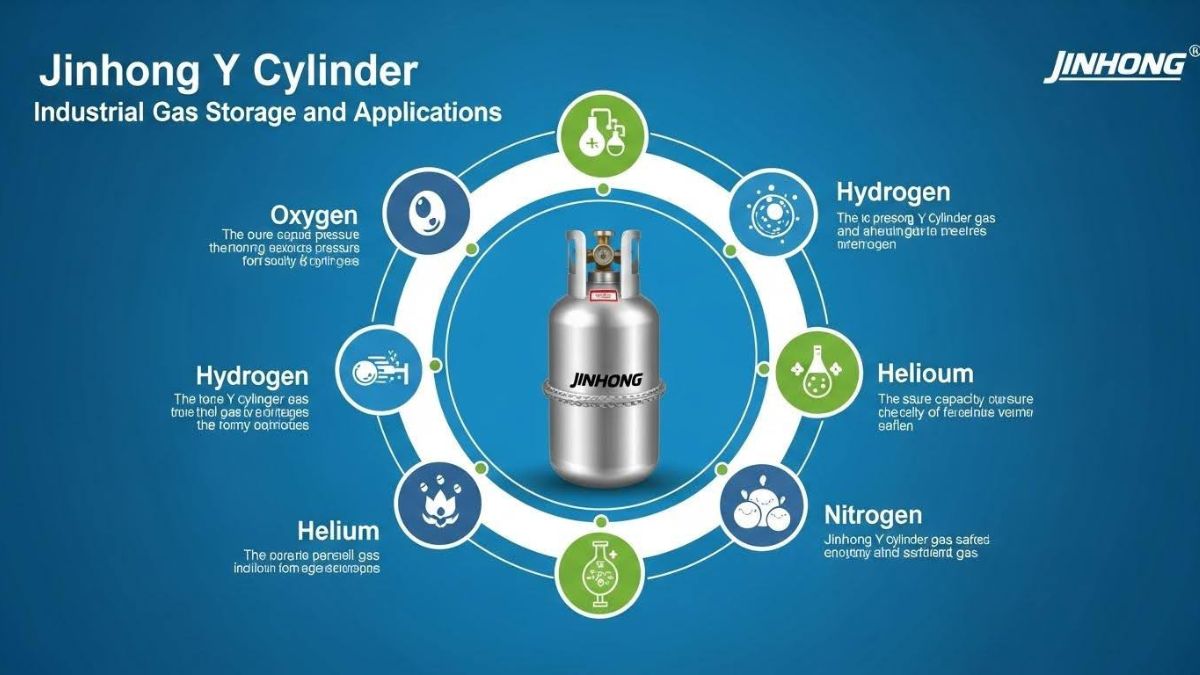TOPIC
Singapore Rental Market Trends: What Renters Need to Know in 2025

The Singapore rental market in 2025 is shaping up to be dynamic, with significant changes that renters need to stay ahead of. Whether you’re a local tenant looking for an HDB flat or an expatriate seeking a condo in the heart of the city, understanding current trends will help you navigate the rental landscape with confidence.
In this article, we’ll dive into the key factors influencing the current rental market in Singapore, including rental prices, demand shifts, and emerging patterns. We’ll also provide practical advice and insights to help you make informed decisions, whether you’re a first-time renter or a seasoned tenant looking to renew or upgrade your lease.
The Current State of the Singapore Rental Market in 2025
Singapore’s property rental market has been evolving rapidly over the past few years, influenced by factors such as government policies, economic recovery, and shifting tenant preferences. As of 2025, several trends are shaping the rental landscape:
Rising Rental Prices
Rental prices in Singapore have been climbing steadily due to a combination of high demand and limited supply. In 2025, average rents for condominiums and HDB flats remain elevated, with properties in prime locations commanding a premium.
- Example: A one-bedroom condo in the Central Business District (CBD) might cost around SGD 4,500 per month, compared to SGD 3,800 in 2023. Similarly, HDB flats in sought-after areas like Queenstown and Bishan have seen rental increases of up to 15%.
This rise in prices is largely attributed to an influx of expatriates as global companies expand their operations in Singapore, alongside local demand from younger professionals seeking greater independence.
Shift in Tenant Preferences
Post-pandemic, tenants are prioritizing properties that offer flexibility and convenience. Many renters now seek homes with features like co-working spaces, proximity to MRT stations, and access to amenities such as gyms or parks.
- Trend Spotlight: Suburban areas like Tampines, Punggol, and Jurong are growing in popularity due to their modern developments and lifestyle hubs. These areas offer a balance of affordability and convenience, making them attractive to families and remote workers.
- Practical Tip: If you’re flexible about location, exploring options outside the CBD can help you find more spacious homes at lower prices, without compromising on amenities.
Increased Competition for Rental Units
With high demand and limited supply, competition for rental units is fierce. Landlords often receive multiple applications for a single property, and tenants are finding themselves in bidding wars, especially for properties in prime locations.
- Real-Life Example: Jane, an expatriate relocating to Singapore in early 2025, found herself competing with three other tenants for a 3-bedroom condo in Tanjong Pagar. To secure the property, she had to offer SGD 300 above the listed monthly rent.
- How to Stay Ahead: Act quickly when you find a suitable property, and be prepared to negotiate by highlighting your reliability, such as a steady income or a strong rental history.
Flexible Lease Arrangements
Short-term and flexible leases are gaining traction in the property rental market. These options cater to expatriates on temporary assignments and locals who prefer more mobility.
Landlords are increasingly open to shorter lease terms, especially for serviced apartments and co-living spaces, which have become popular among younger renters and digital nomads.
- Pro Tip: If you need flexibility, consider co-living options or apartments in serviced buildings, which typically offer lease terms as short as three to six months.
Factors Influencing the Singapore Rental Market
Several macro and micro factors are shaping the current rental market in Singapore in 2025. Understanding these influences can help you make better rental decisions.
Government Policies
Government housing policies continue to impact the rental market. Measures to control speculation in the property market and initiatives to ensure affordable housing for Singaporeans indirectly affect rental supply and demand.
For instance, stricter rules on subletting HDB flats have limited the supply of affordable rental units, pushing some tenants to consider private apartments.
Economic Recovery and Workforce Growth
As the global economy recovers and businesses expand, Singapore remains a key hub for multinational companies. The resulting influx of expatriates has driven up demand for rental properties, particularly in areas close to business districts and international schools.
- Example: Areas like Bukit Timah and Orchard Road remain hotspots for expatriates, while Marina Bay appeals to professionals seeking high-end, centrally located housing.
Rising Interest Rates
Higher interest rates have made homeownership more expensive, prompting some individuals to postpone buying a property and continue renting. This has added to the demand for rental units, especially among young professionals and newlyweds.
Practical Tips for Renters in Singapore
Navigating the Singapore rental market can be challenging, but these tips will help you secure a property that fits your needs and budget.
1. Set a Realistic Budget
With rental prices on the rise, it’s crucial to determine a budget before starting your search. Account for not just the monthly rent but also additional costs like utilities, maintenance fees, and a security deposit (typically one to two months’ rent).
- Pro Tip: Allocate no more than 30% of your monthly income to housing costs to ensure financial stability.
2. Start Your Search Early
Begin your search at least two to three months before your move-in date to give yourself enough time to explore options and negotiate terms. Early preparation is especially important in a competitive market.
- Real-Life Example: Sam, a young professional, started his search only two weeks before his lease ended and struggled to find a unit within his budget. Starting earlier could have given him more options and time to compare properties.
3. Use Multiple Platforms
Leverage multiple channels to find rental properties. Online platforms are excellent starting points. Additionally, work with a reputable real estate agent who has access to exclusive listings and can guide you through the negotiation process.
4. Inspect Properties Carefully
Before signing a lease, visit the property in person to check for issues such as faulty plumbing, pest infestations, or poor ventilation. If a physical inspection isn’t possible, request a live video walkthrough from the landlord or agent.
Checklist for Inspections:
- Test appliances and fixtures.
- Look for signs of mold or water damage.
- Assess noise levels and natural lighting.
5. Understand the Lease Terms
Read the lease agreement thoroughly and clarify any unclear clauses. Pay attention to details such as:
- Lease duration and renewal terms.
- Who covers maintenance costs.
- Early termination penalties.
Pro Tip: If you’re unsure about any terms, consult a professional or a knowledgeable friend to review the lease before signing.
Emerging Trends in 2025
Looking ahead, several trends are expected to shape the property rental market further:
Green and Sustainable Rentals
Eco-friendly homes are becoming more desirable, with renters willing to pay a premium for properties with sustainable features like energy-efficient appliances, solar panels, and green building certifications.
Rise of Co-Living Spaces
Co-living continues to grow in popularity, especially among younger tenants and digital nomads. These spaces offer affordable, community-oriented living with shared amenities, making them ideal for those seeking flexibility.
Tech-Driven Renting
Digital platforms are making the rental process more seamless. From virtual tours to digital lease signing, technology is streamlining how tenants search for and secure properties.
Conclusion
The Singapore rental market in 2025 is marked by rising prices, shifting tenant preferences, and increased competition. Whether you’re navigating the current rental market in Singapore as a newcomer or renewing an existing lease, staying informed about trends and best practices is essential.
By setting a realistic budget, starting your search early, and being thorough in your inspections, you can find a property that meets your needs in this competitive landscape. As the property rental market continues to evolve, flexibility and preparation will be your biggest assets in securing the right rental home.
TOPIC
Exploring the Jinhong Y Cylinder: Industrial Gas Storage and Applications

In industrial and laboratory environments, the need for reliable gas storage solutions is crucial. Among the many formats available, the Jinhong Y cylinder stands out as a high-capacity, high-pressure gas container designed for efficient storage and transport of specialty gases. With an emphasis on purity, performance, and safety, Y cylinders are trusted by industries ranging from semiconductors and laboratories to petrochemical plants and aerospace operations.
This article takes a deep dive into the design, specifications, applications, and advantages of the Jinhong Y cylinder, while also shedding light on the broader offerings of Jinhong, a global player in the specialty gas and cylinder market.
What Is a Y Cylinder?
A Y cylinder—sometimes referred to as a “ton container” or “T cylinder”—is a large, horizontal gas cylinder used to store and transport gases in bulk, especially under high pressure. These cylinders are ideal for gases that are either costly or consumed in large volumes, such as:
- Sulfur hexafluoride (SF₆)
- Silane (SiH₄)
- Ammonia (NH₃)
- Chlorine (Cl₂)
- Hydrogen chloride (HCl)
Y cylinders are constructed using high-strength steel or other reinforced materials and come equipped with pressure relief valves, gas-specific valve types, and neck threads tailored to the properties of the stored gas.
Dimensions and Specifications of Y Cylinders
Though specifications may vary slightly by manufacturer, Jinhong’s Y cylinders typically follow global standards for gas container design. Here are some standard specifications:
| Specification | Typical Value |
| Water Capacity | 49.5 – 52.5 liters |
| Working Pressure | Up to 150 bar (depending on gas) |
| Material | Seamless steel |
| Cylinder Orientation | Horizontal |
| Cylinder Weight | ~90 – 110 kg (empty) |
| Certification Standards | ISO9809, DOT, TPED, GB, etc. |
These cylinders are built to resist corrosion, handle hazardous contents, and ensure long-term durability under demanding industrial conditions.
Why Choose the Jinhong Y Cylinder?
Jinhong, a trusted name in the specialty gas industry, has a reputation for producing high-quality gas cylinders and supplying ultra-high purity gases to global markets. Their Y cylinders stand out due to the following reasons:
1. High Storage Capacity
Compared to standard industrial cylinders, Y cylinders provide significantly more gas per unit, reducing the frequency of cylinder changes and minimizing downtime.
2. Safety Compliance
Every Jinhong Y cylinder complies with international safety codes, ensuring that gases are safely stored and transported. From valve compatibility to explosion-proof construction, these cylinders are designed for handling toxic, corrosive, or flammable gases.
3. Versatility Across Industries
Whether it’s used in a semiconductor cleanroom or a chemical processing facility, the Y cylinder can handle diverse gases without compromising purity or safety.
4. Customization Options
Jinhong offers a range of customizable features for its Y cylinders, including:
- Valve type (Diaphragm, Ball, Needle)
- Gas purity levels
- Color-coded coatings
- Stamped serial numbers for traceability
Industrial Applications of Y Cylinders
Y cylinders are essential in sectors where gas consumption is high and continuous. Let’s explore their role across a few industries:
Semiconductor Industry
Gases like silane (SiH₄), ammonia (NH₃), and hydrogen chloride (HCl) are delivered in Y cylinders to semiconductor fabs. Their large volume capacity ensures consistent feedstock supply for chemical vapor deposition (CVD) and etching processes.
Chemical Manufacturing
In chemical synthesis and polymer production, bulk gases are used in continuous-flow reactors. Y cylinders reduce gas replacement frequency and ensure stable operations.
Power and Utilities
Sulfur hexafluoride (SF₆) is a common gas used for insulation in high-voltage switchgear. SF₆ is often stored in Y cylinders due to the quantity required for substations and grid systems.
Metallurgy and Welding
Some specialty gases used in high-end alloy processing and thermal spray coatings are stored in Y cylinders to maintain purity and minimize contamination risks.
Jinhong: Beyond Cylinders
Jinhong isn’t just a cylinder manufacturer—it’s a global supplier of industrial and specialty gases. From argon to acetylene, Jinhong provides gases for welding, medical, research, and semiconductor sectors.
Interested in pricing on one of Jinhong’s most popular gases? You can explore cost breakdowns for commonly used products like argon here: Jinhong
This pricing insight is helpful whether you’re sourcing gases in bulk or planning an industrial-scale project.
Maintenance and Safety Tips
Proper handling and maintenance of Y cylinders are essential to avoid hazardous situations:
- Store upright in well-ventilated areas
- Use regulators and fittings specific to the gas type
- Perform leak checks before each use
- Never attempt to refill or modify cylinders without professional certification
- Always follow SDS (Safety Data Sheet) instructions for each gas
Jinhong provides comprehensive safety documentation and training resources for all its products, including Y cylinders and the gases they carry.
Cost Considerations
While Y cylinders require a higher upfront cost compared to standard cylinders, they offer better cost-efficiency over time due to:
- Fewer cylinder changes
- Reduced shipping and handling
- Lower downtime in continuous processes
In bulk supply scenarios or semiconductor facilities, Y cylinders can lead to significant cost savings when calculated on a per-liter or per-gram gas usage basis.
Global Standards and Certification
Jinhong’s cylinders conform to key international standards, including:
- ISO 9809 for seamless steel cylinders
- DOT/TC certification for U.S. and Canadian markets
- TPED/ADR compliance for Europe
- GB standards for China
This makes them an ideal choice for companies operating in regulated industries and across global markets.
Conclusion
The Jinhong Y cylinder represents a critical innovation in industrial gas storage, offering bulk capacity, high-pressure tolerance, and unmatched safety. Whether you’re in semiconductor fabrication, chemical processing, or energy infrastructure, this cylinder format is built to support high-performance applications while ensuring operational efficiency.
Jinhong’s commitment to quality, global distribution, and innovation in specialty gases has made them a go-to supplier for businesses around the world. If you’re looking to invest in reliable, certified, and high-capacity gas storage, the Y cylinder may be exactly what your operation needs.
TOPIC
Can You File a Claim If Road Conditions Caused Your Motorcycle Crash?

Motorcycle crashes impact lives. When poor road conditions cause these accidents, you may wonder about filing a claim. Understanding your rights helps you make informed decisions. Bad roads, such as those with potholes or debris, present unique challenges for riders. These hazards can lead to devastating outcomes. You may think, “Who is responsible?” That’s a fair question. State or local governments often manage road upkeep. If they neglect maintenance, they might be accountable. But proving this requires evidence and expertise. Consulting experienced professionals is crucial. Groth Law Accident Injury Attorneys is a trusted resource in such situations. They guide you through the legal process. Gathering evidence, such as photos or witness testimonies, strengthens your case. Awareness of these steps can protect your future. You deserve justice when harmed due to someone else’s negligence. Understand your options. Knowledge empowers you to seek rightful compensation. Let’s uncover what action you can take.
Your Legal Rights and Responsibilities
When faced with a motorcycle crash caused by poor road conditions, knowing your rights is the first step toward resolution. Do you have a claim? Yes, if negligence on the part of road maintenance entities contributed to the crash. It’s critical to determine if the government is responsible for the road’s condition. Understanding regulations helps you establish a claim. For instance, Federal Highway Administration provides guidelines on road maintenance. Knowing these can help you understand where negligence occurred.
Proving Negligence in Motorcycle Crashes
To succeed in a claim, you must prove negligence. This involves showing that the responsible party knew or should have known about the hazard. Gathering evidence is essential. You need clear proof that links the road condition to your crash. Photos, reports, and witness statements play a vital role. Document everything, including the location, time, and specific conditions of the road. These details create a strong foundation for your claim.
Steps to File a Claim
Filing a claim involves several steps. First, report the accident to authorities. Accurate police reports can aid your case. Then, seek medical attention. Health records not only ensure your well-being but also serve as evidence of your injuries. Afterward, consult legal experts. They guide you through the intricate legal process. Experts can help you notify the responsible government entity of your intent to file a claim. It’s important to meet all legal deadlines, as missing them can jeopardize your case.
Understanding Liability
Determining liability in these cases can be complex. The table below outlines possible responsible parties and their typical maintenance duties:
| Responsible Party | Typical Maintenance Duties | When Liability May Apply |
| Local Governments | Maintain city streets | When city roads are neglected |
| State Governments | Maintain highways | When highways have hazards |
| Federal Agencies | Oversee federal routes | When federal routes are unsafe |
Importance of Expert Guidance
Expert guidance is invaluable. Legal professionals understand the nuances of such claims. They assess your situation and offer advice tailored to your needs. With their help, you can navigate the complexities of the legal system. This support can be a significant relief, ensuring your rights are protected.
Taking Action
Act promptly. Time matters in these cases. Evidence can disappear, and legal deadlines can pass quickly. By acting swiftly, you preserve your rights and enhance your chances of success. Stay informed and proactive throughout the process. Your diligence can make a substantial difference in the outcome.
Conclusion
Motorcycle crashes are life-altering events. When poor road conditions cause these incidents, you have the right to seek justice. Proving negligence requires careful documentation and expert assistance. By understanding your rights and taking informed steps, you can pursue rightful compensation. Remember, you are not alone. There are resources and professionals ready to guide you through this challenging time. Your well-being and future matter. Take control and act today.
TOPIC
A Kidnapping Private Detective Shares 8 of the Top Reasons Kidnappers Choose to Kidnap Others

Kidnapping is a terrifying crime that can happen to anyone. Children and adults are often targeted. It is necessary to communicate with private investigators in OKC and process servers near me who have worked on multiple kidnapping cases. Their knowledge about kidnapping cases reveals the top hidden reasons for kidnappers. These expert professionals play an important role in solving complex cases like this.
The top 8 reasons kidnappers choose to kidnap others and how process servers in OKC and private investigators in OKC help victims seek justice are explained in this blog.
1. Ransom Money
Money is seen as the most common reason behind kidnapping. Kidnappers often target those who belong to wealthy families and business backgrounds, so they can have a large amount of money from the victims’ families. Private investigators in Oklahoma City are experts in tracking them and getting in communication to work with law enforcement for victims.
2. Personal Revenge
Kidnappers often kidnap people for personal conflicts instead of money. In such cases, people take revenge on others. It can be a partner, close friend or even a colleague. A private investigator in OKC can collect evidence and uncover the truth for justice.
3. Custody Battles
Sometimes, one parent can kidnap their child because of a custody battle, and it is known as parental kidnapping. These situations can be complicated if parents take their child outside the state. In such a situation, private investigators in Oklahoma work closely with high authorities to track kidnappers and return the child safely.
4. Human Trafficking
Human trafficking has been a major issue in the U.S., including in Oklahoma. Traffickers kidnap individuals and force them into exploitation. Quick responses from a process server in Oklahoma City can make all the difference and avoid court cases.
5. Mental Illness or Delusion
Not every kidnapper has a logic behind kidnapping. Some kidnappers have mental illnesses, and they believe it is a way to earn money from people who do not belong to them. These cases are extremely difficult and cannot be solved without the help of investigators near me who can handle complex situations.
6. Jealousy or Obsession
People who are jealous and obsessed kidnap others to gain control over them. A skilled private investigator and process server in OKC works with law enforcement to protect victims and uncover the truth.
7. Coercion or Leverage
People often kidnap others to pressure them. For example, a criminal kidnaps a business owner to get assets from them. In such high-profile cases, a process server in OK delivers legal documents to deal with the kidnappers and support victims.
8. Random Opportunity or Mistake
Some kidnappings are not planned. Some happen due to mistaken identities. Process servers and private investigators in Oklahoma City can interview witnesses and help with identifying the suspect.
Conclusion
People often get upset and emotional when they face the kidnapping of their loved ones. In such a complicated situation, it is necessary to find private investigators in OKC and a process server in Oklahoma who have experience in solving complex cases. These professionals are familiar with Oklahoma laws and work efficiently to gather evidence.
If you are searching for private investigators and process servers near me, it means you have trust in them that their services are reliable and supportable for their clients who hire them. The right team can help you everywhere, whether it’s a court matter, a child custody battle or a kidnapping case.
-

 BLOG1 year ago
BLOG1 year agoATFBooru: A Hub for Animated Art and Community
-

 CONSTRUCTION1 year ago
CONSTRUCTION1 year agoBuilding a Home Gym in Your Basement (7 Key Renovation Tips)
-

 BLOG1 year ago
BLOG1 year agoFictionmania: A Deep Dive into the World of Transformative Stories
-

 GAMES1 year ago
GAMES1 year agoSnow Rider 3D: Unblocked Tips and Tricks for Gamers
-

 BLOG12 months ago
BLOG12 months agoGIFHQ: A Comprehensive Guide
-

 BLOG1 year ago
BLOG1 year agoVincent herbert new wife: A Detailed Overview
-

 LIFESTYLE12 months ago
LIFESTYLE12 months agoVersatile Living: Stylish Indoor Outdoor Rugs with Eco-Friendly Appeal
-

 BUSINESS1 year ago
BUSINESS1 year agoInvestiit.com Tips: A Comprehensive Guide for Smart Investing
